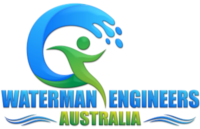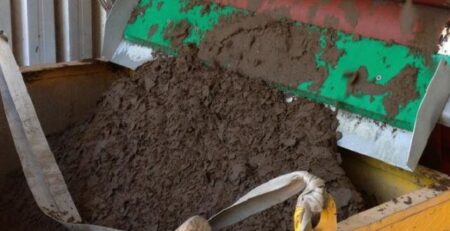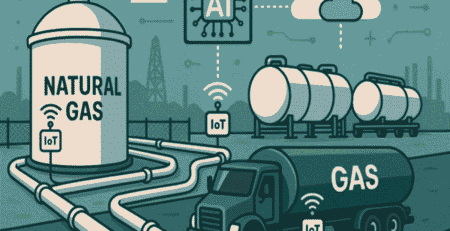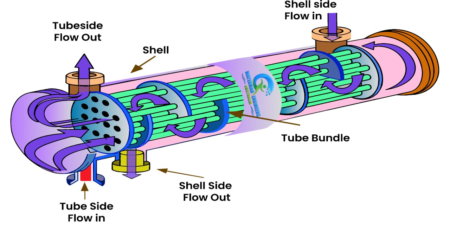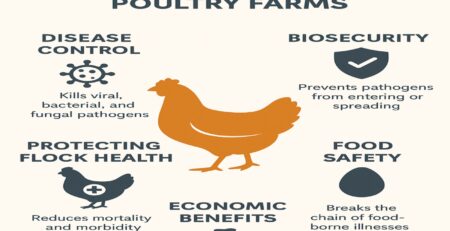Comparative Analysis of Multi-Effect Distillation with Thermal Vapour Compression (MED-TVC) and Mechanical Vapour Recompression (MED-MVR) for Seawater Desalination
Comparative Analysis of MED-TVC and MED-MVR for Seawater Desalination
1. Basic Principle of Operation
| Aspect | MED-TVC | MED-MVR |
|---|---|---|
| Vapour Compression Method | Uses Thermal Vapour Compression: High-pressure steam (motive steam) entrains and compresses vapour from the last effect using an ejector (jet compressor). | Uses Mechanical Vapour Recompression: A mechanical compressor (usually centrifugal or Roots blower) recompresses the vapour mechanically to a higher pressure. |
| Primary Energy Source | Thermal energy (steam) from an external source such as boilers, waste heat, or power plants. | Electrical energy driving the mechanical compressor (electricity-driven). |
| Driving Force | Steam pressure difference; ejector entrainment efficiency governs performance. | Compressor work; pressure and temperature rise achieved mechanically. |
| Vapour Handling | Non-condensable gases and excess vapour are discharged after each stage or sent to ejector. | Almost all vapour is recompressed and reused; minimal losses to atmosphere. |
2. Energy Consumption
| Aspect | MED-TVC | MED-MVR |
|---|---|---|
| Specific Energy Consumption (SEC) |
Typically 25–45 kWhₑ/m³ equivalent (when considering steam energy in primary form). | 5–15 kWhₑ/m³, primarily electrical energy. Lower total energy input. |
| Thermal Energy Requirement | Significant; needs high-pressure motive steam (e.g., 2–6 bar). | Minimal or no thermal energy required; mostly electrical energy. |
| Electrical Energy Requirement | Very low (0.5–2 kWhₑ/m³) for pumps and controls. | Higher electrical consumption (5–15 kWhₑ/m³) due to compressor load. |
| Energy Source Dependency | Depends on steam supply from boilers or process waste heat. | Fully dependent on reliable electricity supply. |
3.Plant Complexity & Components
| Aspect | MED-TVC | MED-MVR |
|---|---|---|
| Main Components | Effects, vapour ejector (TVC), condensers, pumps. | Effects, mechanical compressor, heat exchangers, pumps. |
| Mechanical Complexity | Lower; TVC has no moving parts, simpler operation. | Higher; compressor needs maintenance, bearings, seals. |
| Instrumentation Requirement | Standard process control instrumentation. | Additional monitoring and control for compressor operation. |
| Maintenance | Lower; TVC is robust and requires minimal servicing. | Higher; mechanical compressor requires regular inspection, overhaul. |
- Scalability & Capacity
| Aspect | MED-TVC | MED-MVR |
|---|---|---|
| Ideal Capacity Range | Medium to large-scale plants (10,000 – 1,000,000 m³/day). | Small to medium-scale plants (500 – 30,000 m³/day). |
| Scalability | Easily scalable; TVC adapts well to large units. | Less scalable to large sizes due to mechanical compressor limits. |
| Flexibility | Good with fluctuating steam sources (e.g., cogeneration). | Good with reliable electrical supply; less suitable where grid power is unstable. |
5.Operational Aspects
| Aspect | MED-TVC | MED-MVR |
|---|---|---|
| Start-up Time | Long (due to boiler/steam system warm-up). | Faster; electrical start-up possible in minutes. |
| Control Stability | Good; mature technology. | High; but depends on compressor control system efficiency. |
| Part-Load Operation | Efficient; TVC can adjust steam flow as needed. | Part-load operation affects compressor efficiency; better at constant load. |
- Capital and Operating Costs
| Aspect | MED-TVC | MED-MVR |
|---|---|---|
| Capital Expenditure (CAPEX) | Higher due to steam system (boiler, piping, TVC). | Lower for small plants; higher if large compressors needed. |
| Operating Expenditure (OPEX) | Lower electricity costs but higher thermal energy costs (unless using waste heat). | Higher electricity costs but minimal or no thermal energy. |
| Maintenance Costs | Low; mainly pumps and heat exchangers. | Higher; compressor maintenance, spare parts, potential downtime. |
- Thermodynamic Performance
| Aspect | MED-TVC | MED-MVR |
|---|---|---|
| Gain Output Ratio (GOR) | Moderate: 8–12 (depends on number of effects and steam quality). | High: 15–22 due to efficient vapour reuse. |
| Thermodynamic Efficiency | Lower; relies on continuous input of thermal energy. | Higher; maximum vapour recycling reduces input energy. |
| Exergy Destruction | Higher due to steam throttling in ejector. | Lower; mechanical recompression reduces exergy losses. |
- Environmental Impact
| Aspect | MED-TVC | MED-MVR |
|---|---|---|
| CO₂ Emissions | Depends on steam source (fossil-fuel boiler increases emissions unless waste heat used). | Depends on grid power or renewable electricity; lower if green electricity is used. |
| Brine Discharge | Similar for both; depends on desalination capacity and feedwater. | Similar. |
| Chemical Usage | Minimal; both require low antiscalant and biocide dosing. | Minimal. |
9.Suitability
| Criterion | MED-TVC | MED-MVR |
|---|---|---|
| Large-scale Plants (>100,000 m³/day) | Preferred; better economics, robustness. | Less common; compressor limitations for very large sizes. |
| Small/Medium Plants (<30,000 m³/day) | Less economical. | Preferred; low energy and small footprint. |
| Waste Heat Availability | Ideal choice when integrated with power plants or industrial waste heat. | Less effective; does not utilize low-grade heat. |
| Remote Locations with Unstable Power | Better due to low electrical dependency. | Risky due to reliance on stable electricity. |
- Summary Table
| Factor | MED-TVC | MED-MVR |
|---|---|---|
| Energy Source | Thermal (steam) | Electrical |
| Specific Energy Consumption | 25–45 kWhₑ/m³ (thermal equivalent) | 5–15 kWhₑ/m³ (electrical) |
| Operational Complexity | Lower | Higher (mechanical compressor) |
| Maintenance | Low | High |
| CAPEX | Medium–High (due to steam system) | Low–Medium |
| OPEX | Medium (depends on steam cost) | Potentially lower with cheap electricity |
| Scalability | Large-scale preferred | Small/Medium-scale preferred |
| Environmental Impact | Depends on steam source | Depends on electricity grid |
| Best Use Case | Large desalination plants with waste heat |
Note: These are hypothetical figures and views; please do your own research while making decisions.
